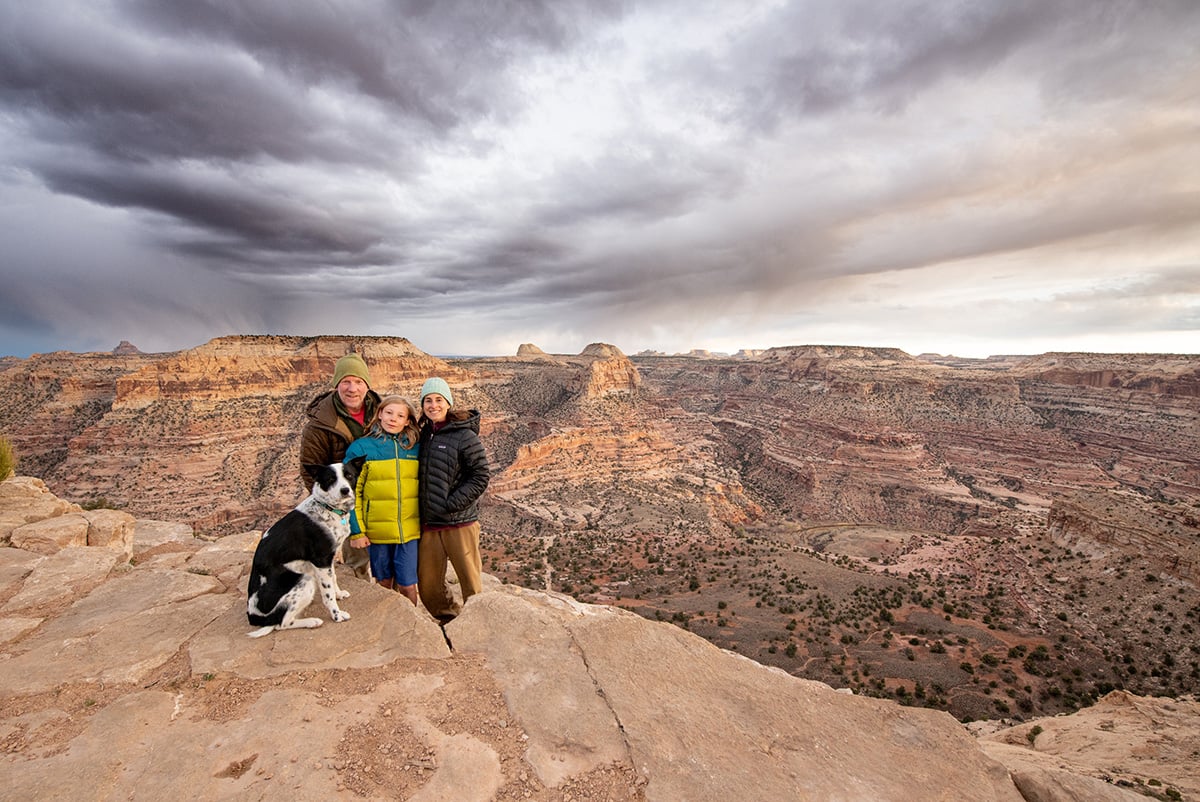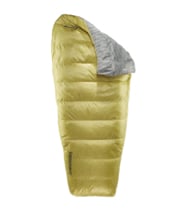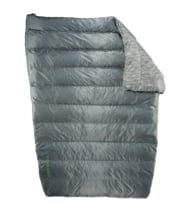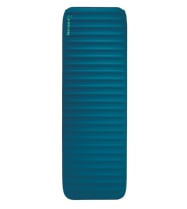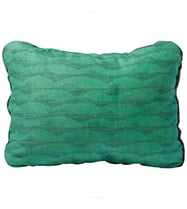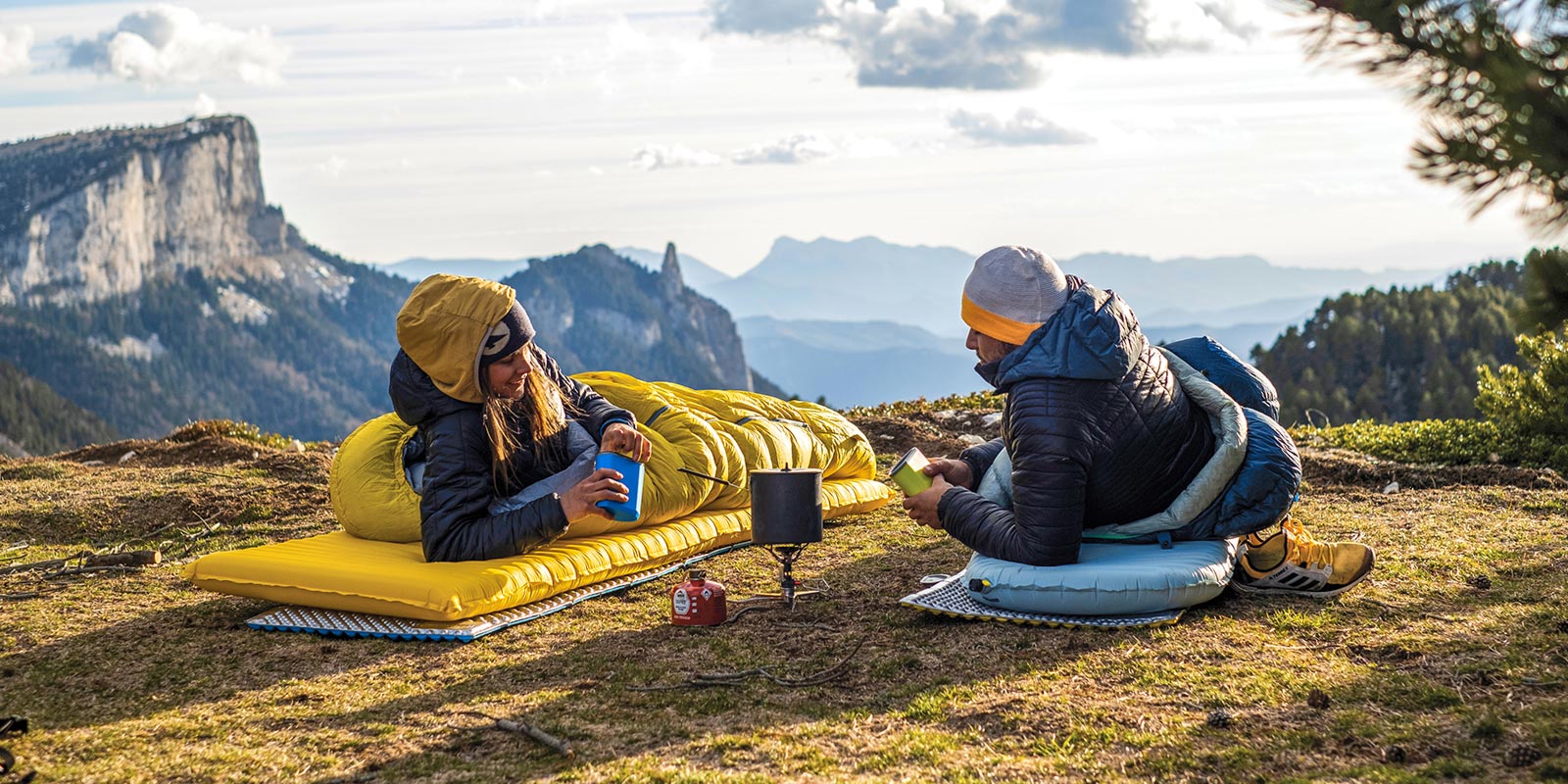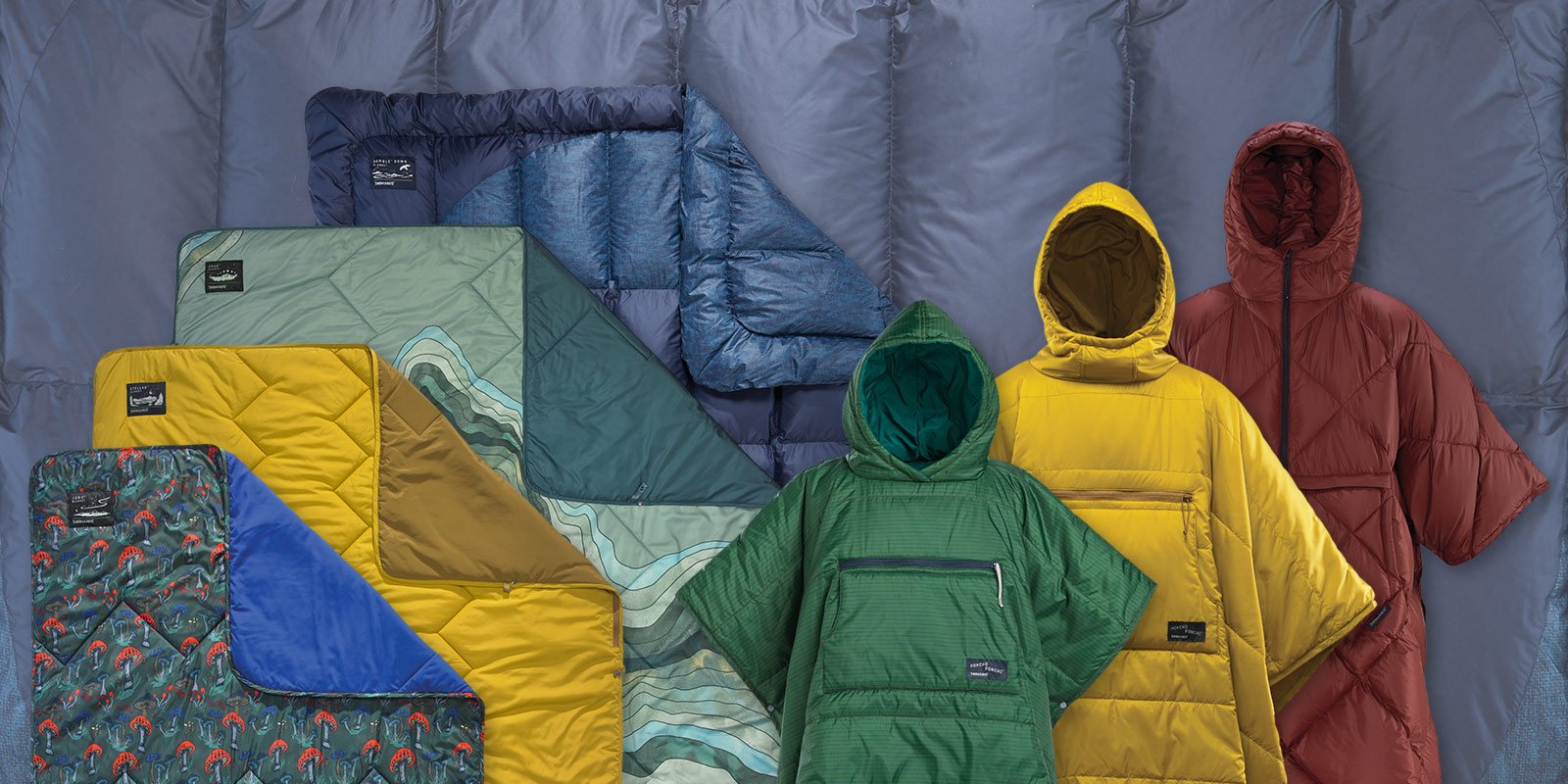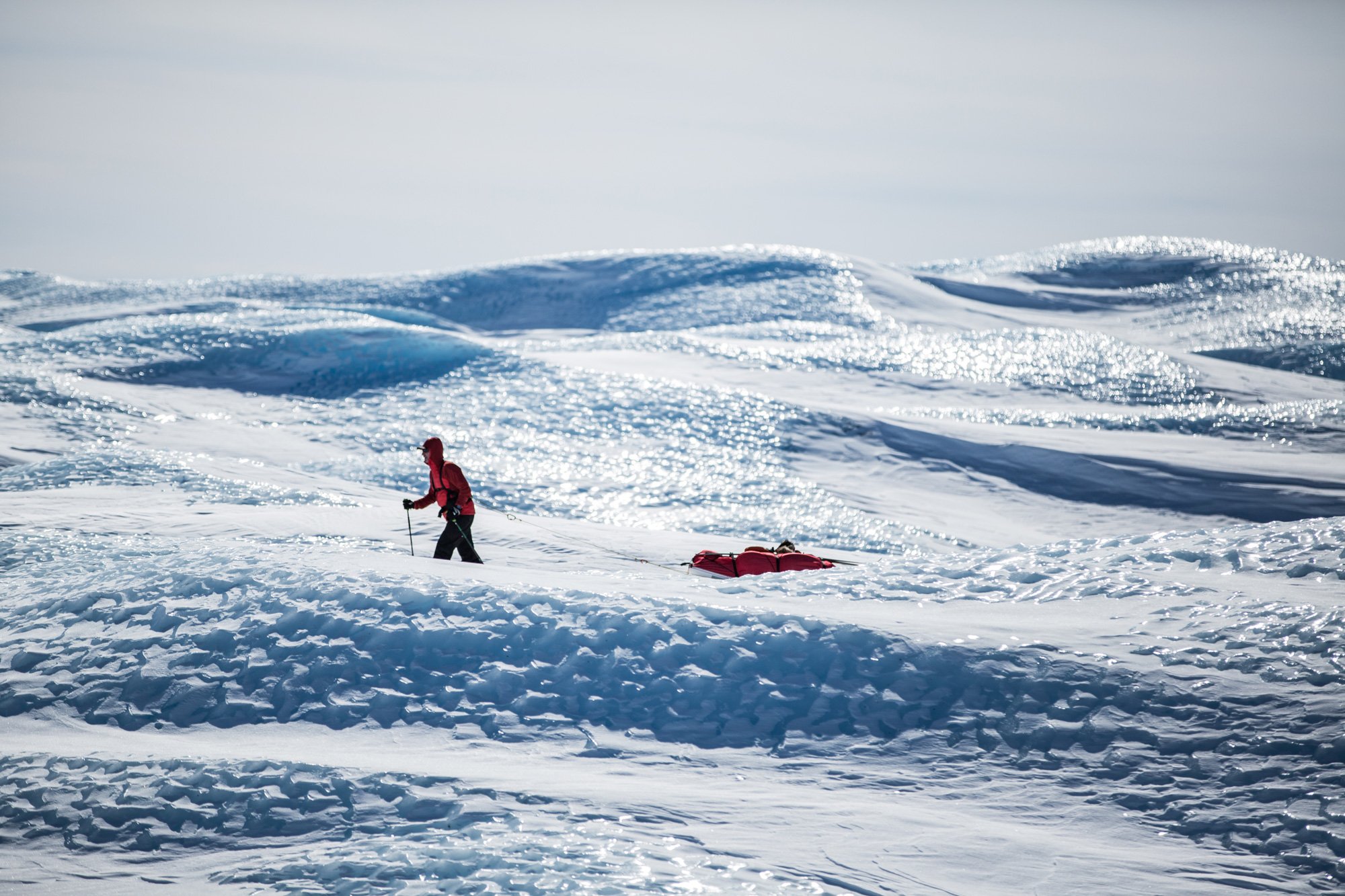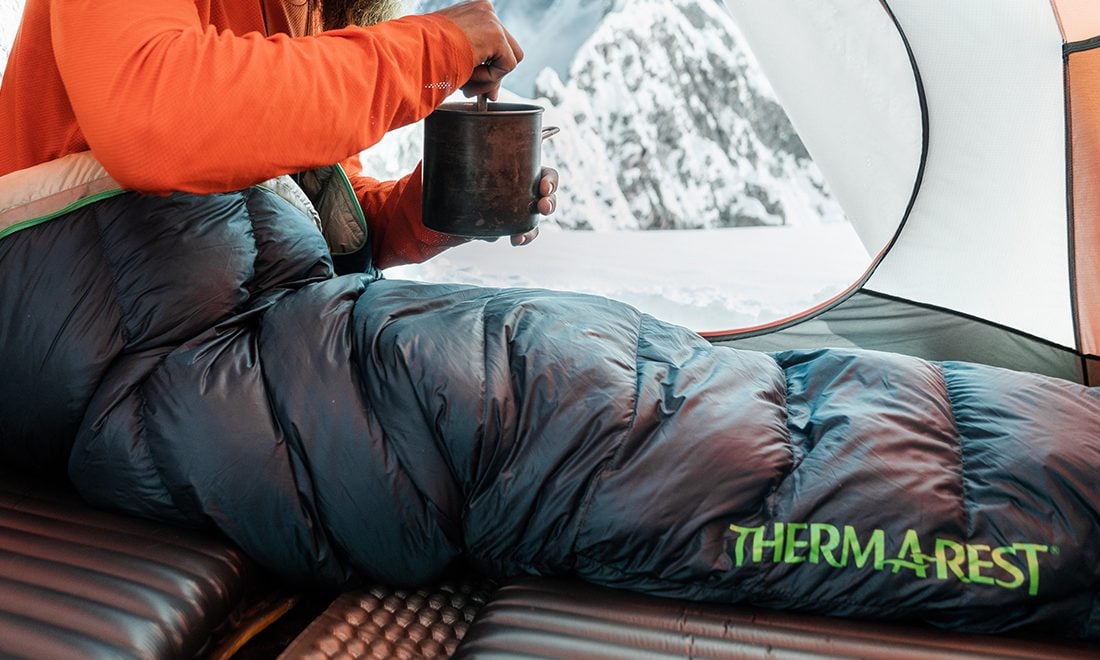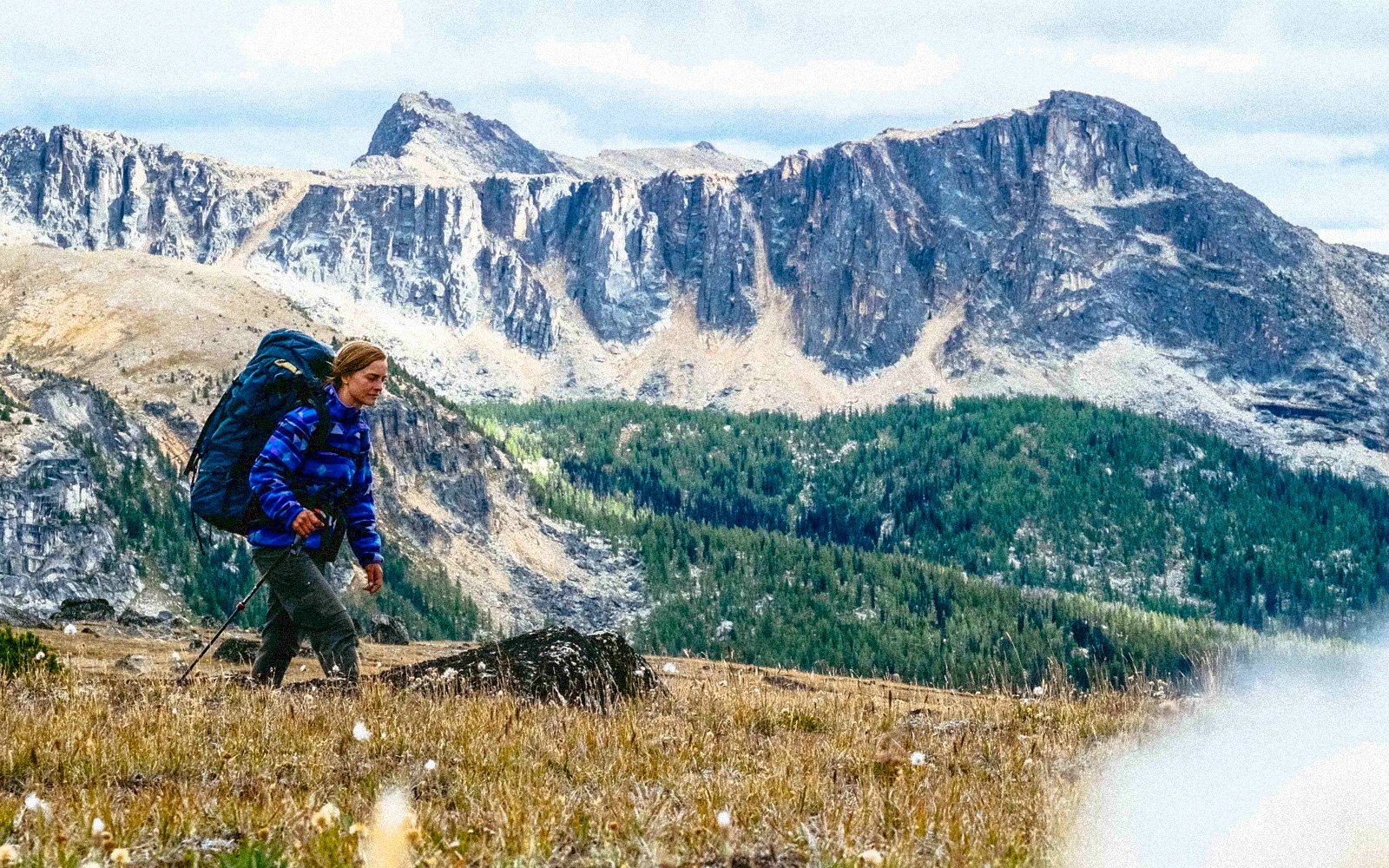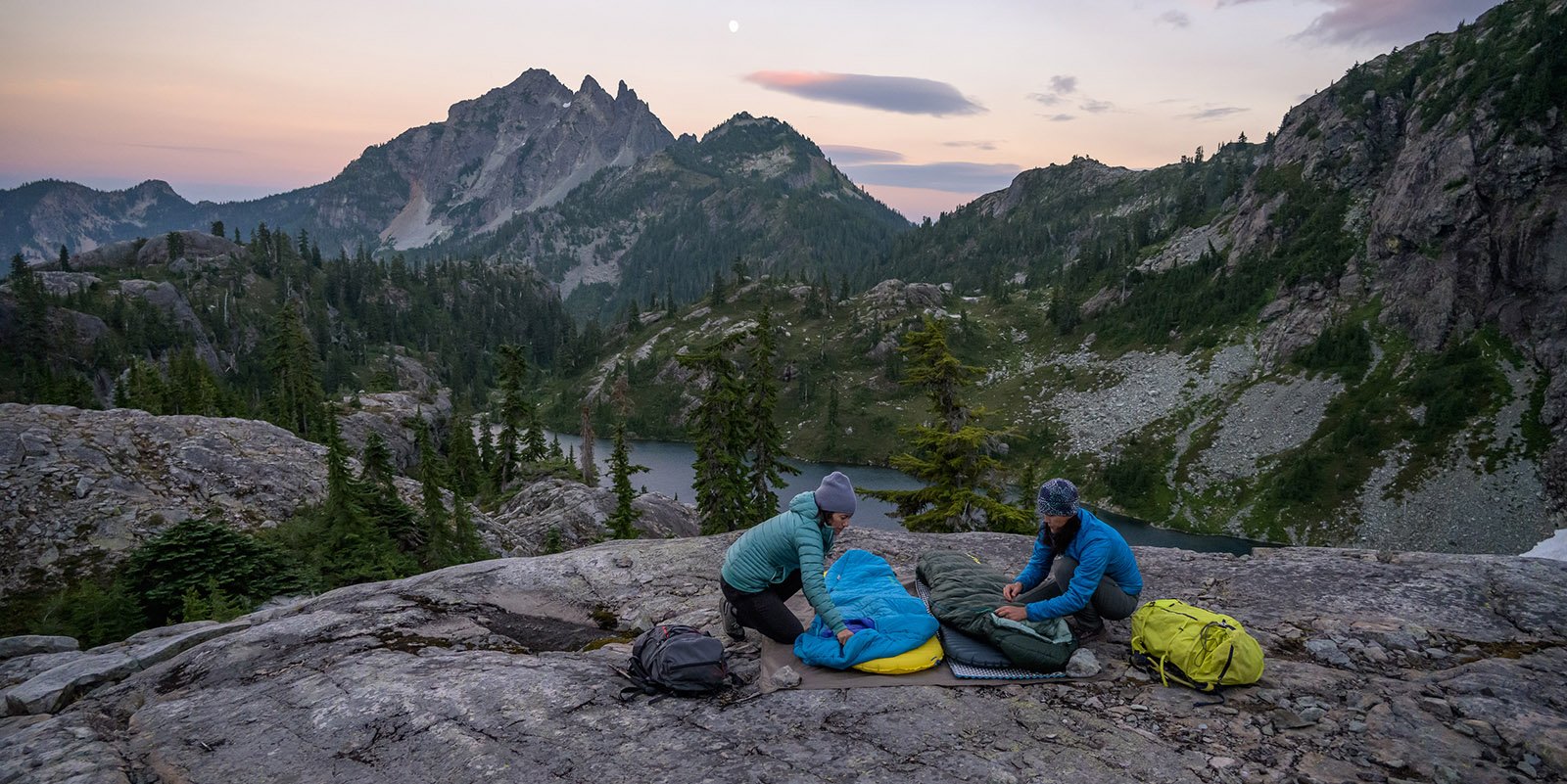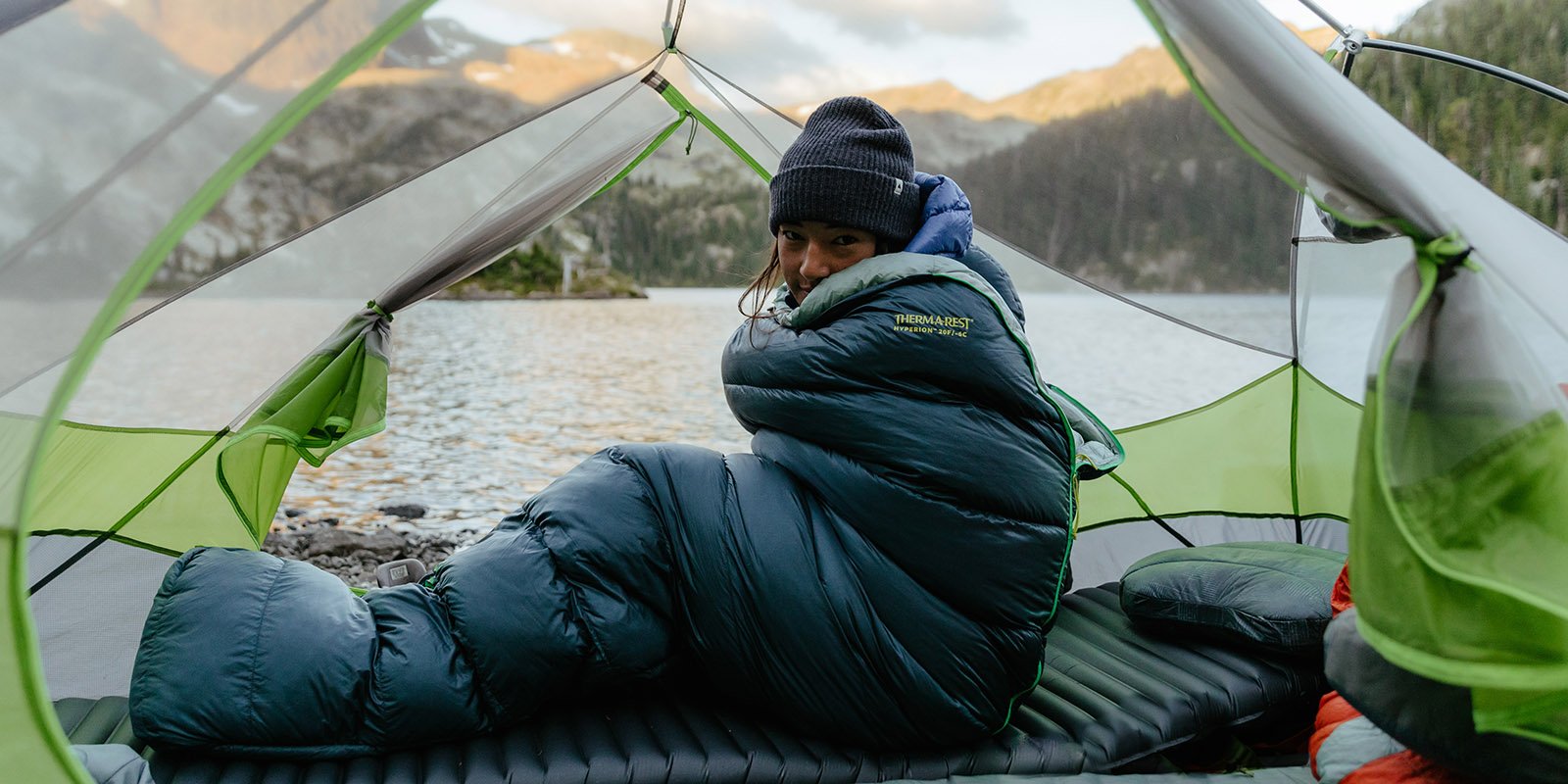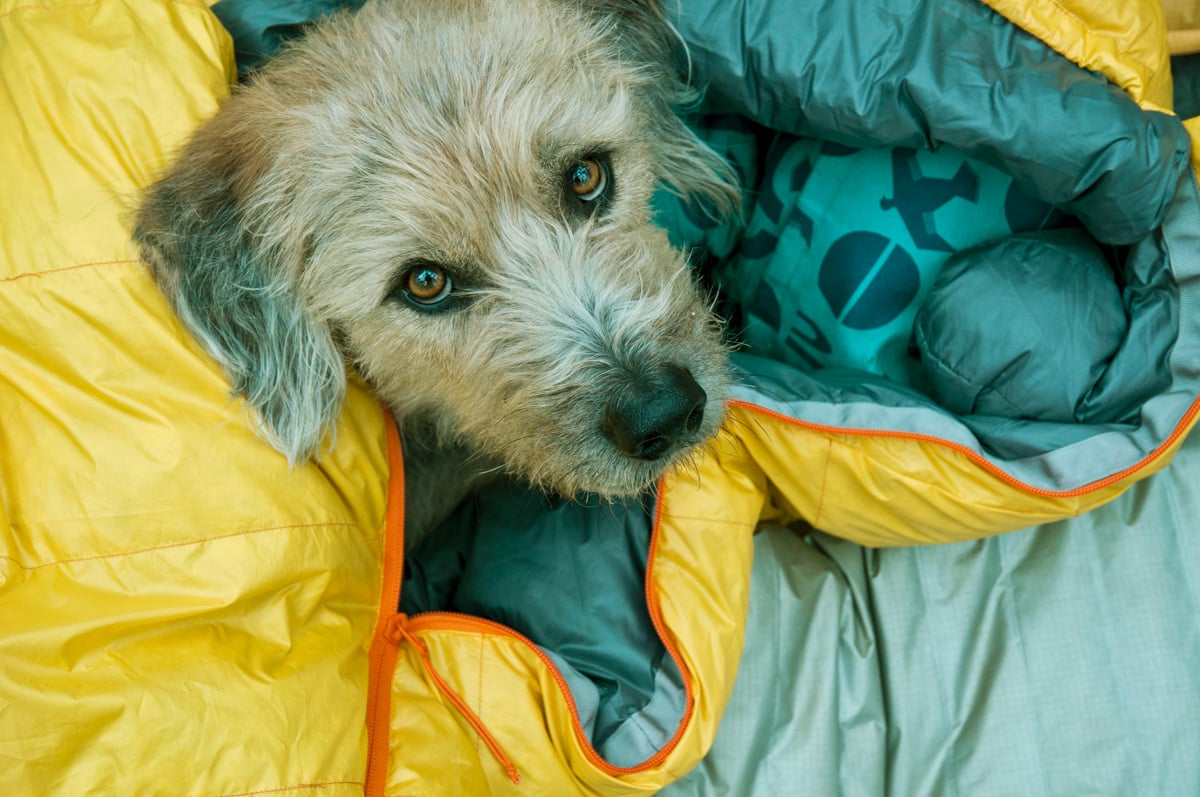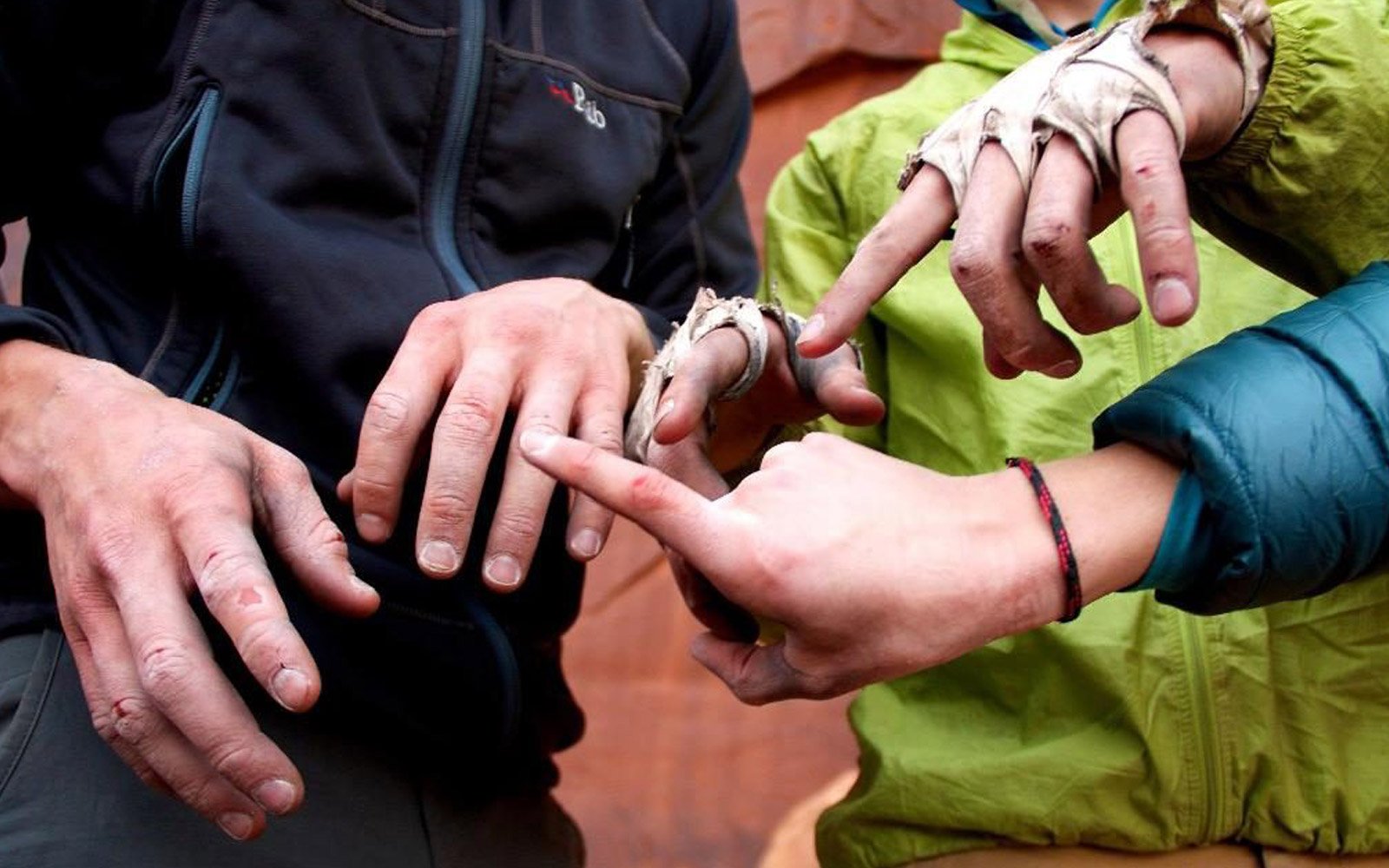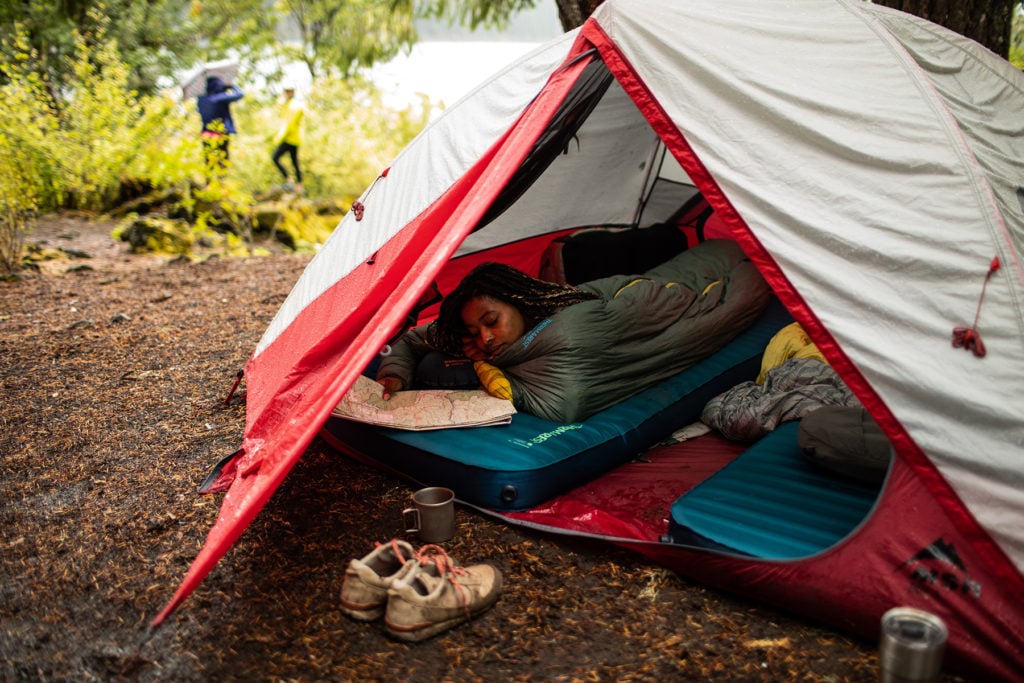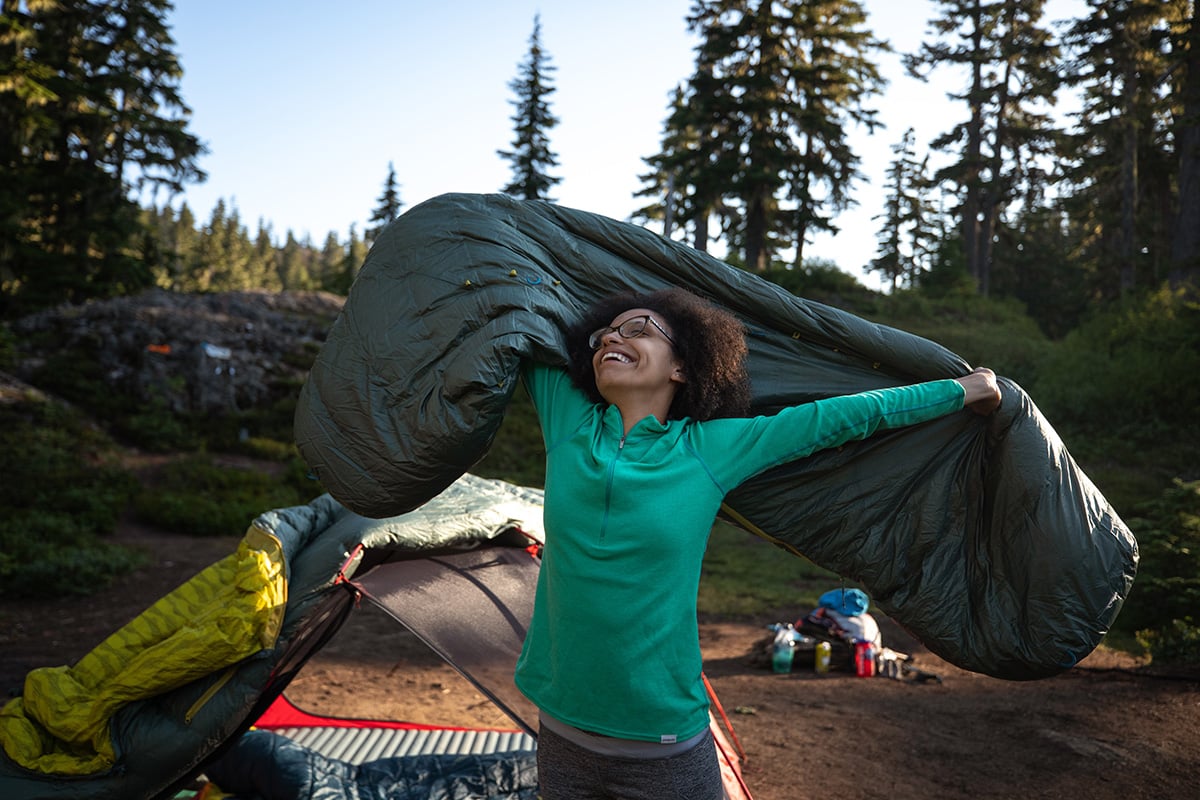Whether you call it dispersed camping, boondocking, guerilla camping, frontcountry camping or otherwise, finding a free place to camp away from the crowds of developed campsites is one of the great privileges afforded by America’s vast public lands.
As more and more people discover the outdoors though, these places are seeing more and more environmental impact. Unfortunately, the increase in pressure risks the future availability of this precious resource. In fact, much has already disappeared in places where land managers have been forced to erect physical barriers or just post “No Camping” signs where people have ignored their basic responsibilities or just not been aware of them as new campers.
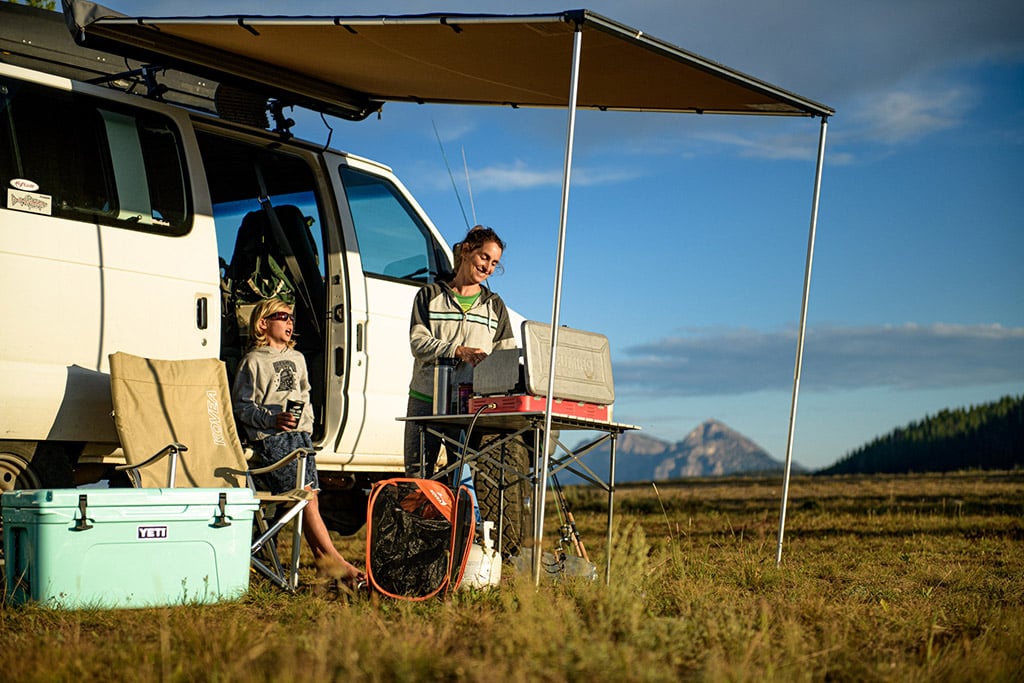 Camping free and easy near Stanley, ID.
Camping free and easy near Stanley, ID.To keep it all rolling smoothly for the future, we’re offering this handy guide to responsible dispersed camping. Whether you’re new to it or are just interested in some tips on how to find a sweet spot to throw down for the weekend, our aim here is to make it a better and more sustainable experience for everyone.
Why Dispersed Camping?
Dispersed camping isn’t for everyone. Sleeping outside of a developed campground means no amenities except what you’ve brought with you – it’s essentially vehicle-supported backpacking. It’s been around forever, of course, but is increasingly popular for a range of reasons that could make for an entire article.
In a nutshell though, the spontaneity-killing paid reservation systems that fill campsites to capacity many months in advance, the booming popularity of road trips, low cost and just wanting a quieter, more private camping experience are some of the main drivers behind the boom in dispersed camping. Moreover, getting off the beaten path into public lands is a rewarding experience that often leads you to areas you might never see otherwise. It’s one of the most accessible ways to see some of the most remote and beautiful places in the country.
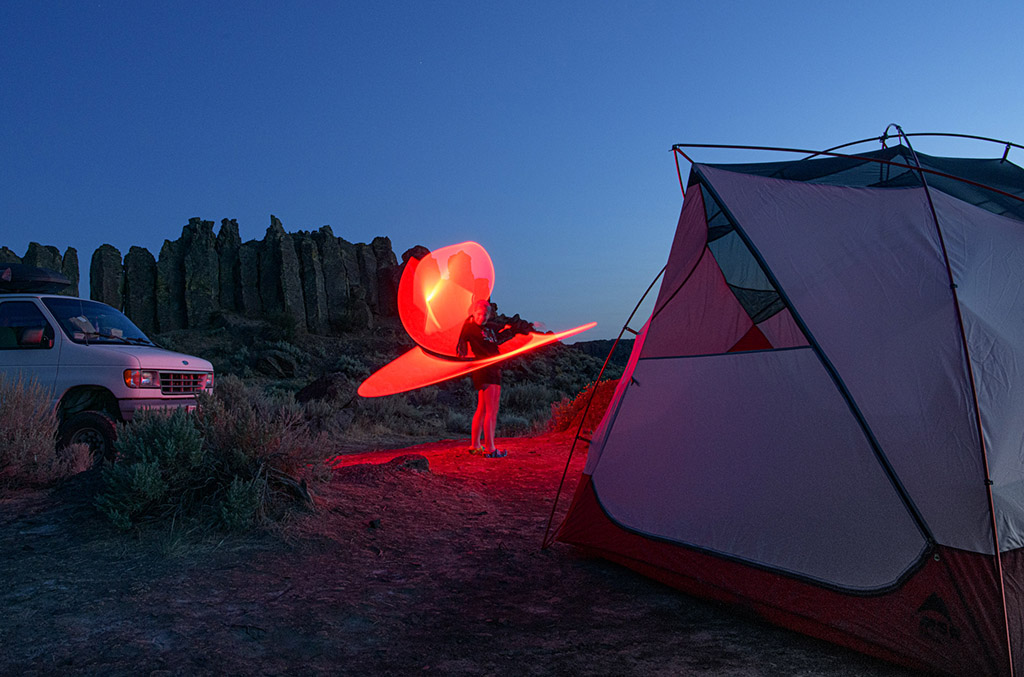 Why dispersed camping? Well, you wouldn’t bring a light saber on a backpack, would you?
Why dispersed camping? Well, you wouldn’t bring a light saber on a backpack, would you?Where Can I Find Free Camping?
Generally speaking, anytime you are in National Forest or Grassland, or on lands managed by the Bureau of Land Management, there is a good chance you can find free camping almost anywhere. To put that into perspective, the BLM alone manages 245 million surface acres of land – roughly 1 of every 10 acres of land in the US. Add to that the 193 million acres managed by the Forest Service and the amount of public land out there is truly staggering.
Of course, a tiny fraction of that is available for our definition of frontcountry/roadside camping. Don’t worry, the opportunities are still vast. Bear in mind that crowds and a lack of understanding or respect for Leave No Trace ethics have further limited how much of that land is accessible. Some high use areas have already turned into paid campgrounds or just been closed to camping. In some places, strict guidelines and designated areas for dispersed camping have been established, but more on that later. You’ll also find some private property on leased Forest Service land but in general, undeveloped, unimproved and unsigned public land is available for camping.
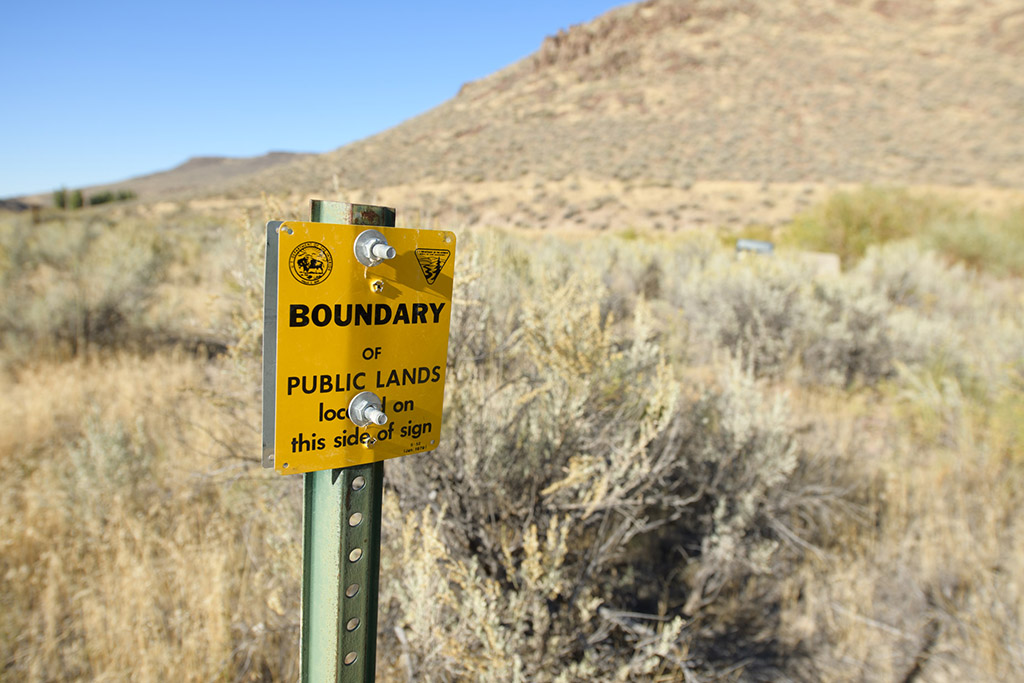
How to Find Dispersed Camping
Any seasoned camper will tell you that a good map is the most essential tool for finding dispersed camping opportunities—the digital variety is invaluable, allowing you to overlay private land plots. Whether analog or digital, you’ll need a detailed one. Gaia GPS, and OnX are popular digital options, and good old Google Maps is ever-helpful and free (though less detailed, especially regarding property boundaries). The iconic DeLorme Atlas & Gazetteers were standard issue before them. In fact, having a Gazetteer handy for each state you’ll cover remains a great back-up should you find yourself without cell coverage or pre-downloaded maps.
You can see in the Gaia GPS example below that there is a National Forest boundary (and accessible roads) just off the edge of the map along this section of Interstate 90, on the border of Idaho and Montana. While not exactly a vacation destination, this kind of camping is a great option for some rest on a road trip.
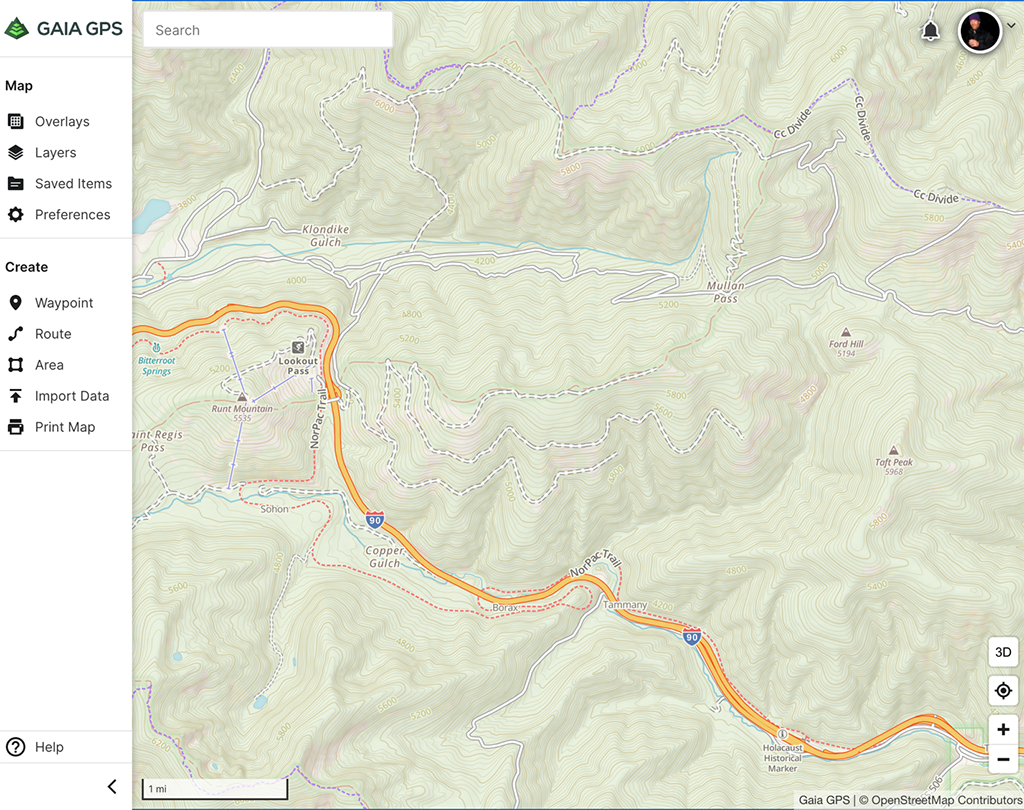
Waking up in a forest beats some dubious backwoods motel any day of the year. Rather than limit oneself to a known hotel booking, you can just drive onward, knowing that much of your route has a likely place to camp just off the road a bit. Be aware that forest roads can be gated, impassable, require 4WD, high clearance or just simply have nowhere flat to pull off safely. Still, more often than not, you can find something to get you through to the morning. Generally speaking, being able to sleep in your vehicle will greatly improve your chances (lower your standards?) for finding something.
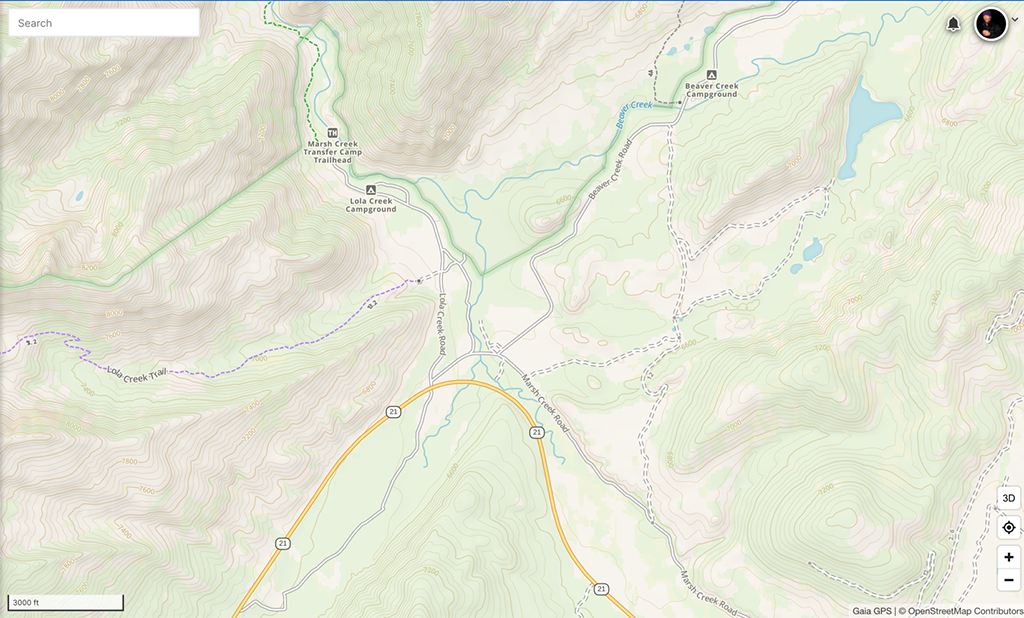
Once off the Interstates, almost all National Forest Land boundaries are marked with the iconic brown “Entering/Leaving [Some Name] National Forest” signs on the roadside. BLM lands generally have much smaller (or no) signs, but that’s why you have a map.
Above is good example of what to look for when seeking a place to hang out for a while. It’s a flatter area on the edge of wilderness with water nearby, plenty of dirt roads with potential campsites possibly offering views.
This area, outside of Stanley, Idaho, turned out to be a stunning place to spend a few days relaxing before heading into the Sawtooth’s on a backpack. We simply followed a dirt road to a spur and followed that to its end and an existing campsite on the edge of a meadow. Again, always heed any locally posted regulations, avoiding private land and areas closed for restoration after years of abuse. Also, note that camping stays are limited to 14 consecutive days in a given spot. After that, you’ll need to move. How far you need to move varies by agency and region, so check locally if you plan to stay a while.
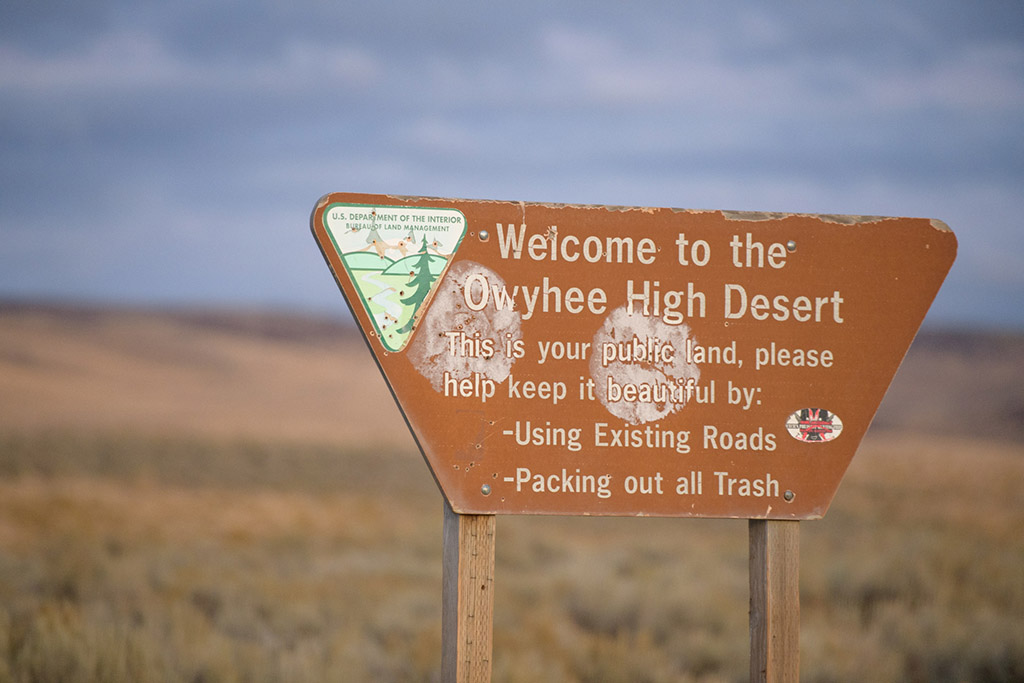 A small BLM sign in Eastern Oregon.
A small BLM sign in Eastern Oregon.Gear Guide for Dispersed Camping
As mentioned before, treat these trips like a vehicle-supported backpack and you’ll be fine, along with a few notable exceptions for added luxury since your car is doing all the carrying.
Sleeping Gear/Shelter
Unless you’re sleeping in a van, bring a big tent. A standing-height tent is palatial and great for escaping the confines of a car or pick-up bed. Traditional sleeping bags are fine, But—weather permitting—a camping quilt provides great comfort by being breathable and roomy. The Corus™ Quilt is a foolproof comfort option and the Vela™ Double Quilt is outstanding for two sleepers. On top of a MondoKing™ Sleeping Pad and a few pillows, you’ll be sleeping like a baby.
Water
We have a 15-gallon tank in our van but ALWAYS carry a filter with us as needed. Besides, nothing beats fresh, cold mountain stream water.
Chairs & Table
Kovea’s Titan Flat Chair is the best camp chair I’ve ever used, and the same goes for their AL Bamboo One Action Table. Both pack super-slim, are lightweight and are perfect for adding that essential boost of luxury and convenience to any road trip.
Cooler
Who wants to run into the nearest town every day for more ice? Grab a Yeti or something similar (like the excellent Canyon Coolers) and stretch your ice for 3-5 days. If price is really no issue and you have an auxiliary power source, go for a Dometic CFX refrigerator. Ice-free travel is truly a game-changer and you can get away with a much smaller cooler than you think without having to take up space with ice.
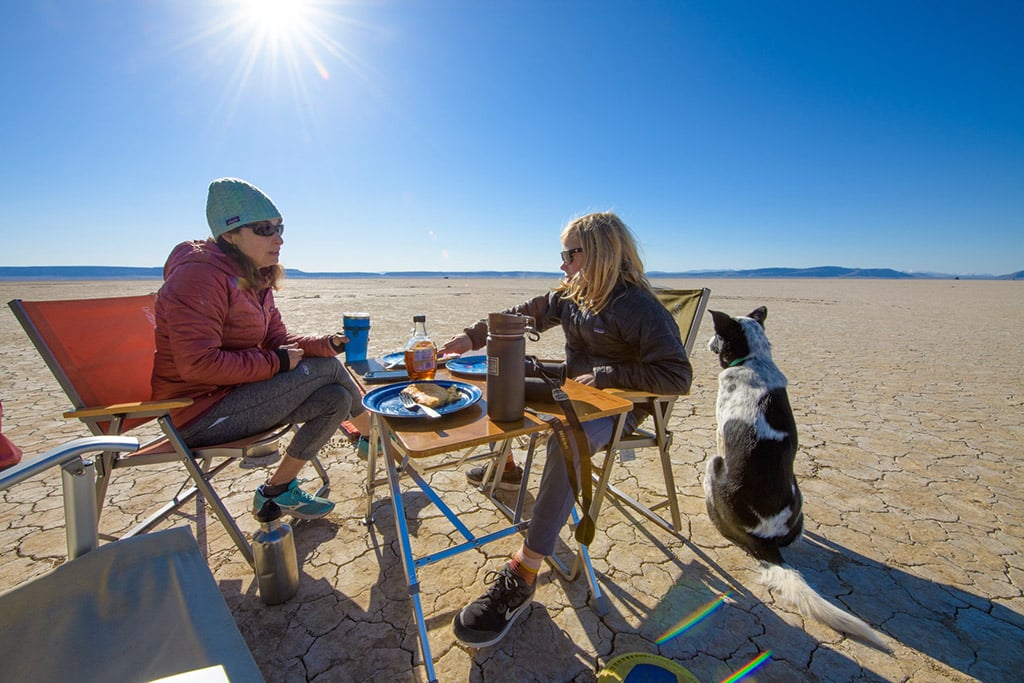 A nice camping setup is more than just nice–it’s relaxing.
A nice camping setup is more than just nice–it’s relaxing.Lights
After trying a number of alternatives, the Luminoodle is my go-to light for ambient, headlamp-free illumination at camp. They’re incredibly bright, run on USB from a power brick or batteries and come with magnet and strap options that make hanging them a breeze.
I recently encountered the Cairn® Lantern by way of a friend. Its harness system makes hanging it in a van, truck, tent or around camp super easy. The dimming and brightening feature gives you the proper amount of light for the situation. Plus, it’s rechargeable and can be a power bank to charge your devices. Best of all, it’s compact enough to toss in a pack for a night hike.
Potty Gear
If you’ve done much camping, you know what a scourge human waste can be. Last year, I remember camping with our three-month-old puppy and spending an unfortunate amount of time chasing him away from numerous piles of human waste, barely buried under rocks and soil, almost IN our camp. I was shocked and angry that people could be so…impractical? (Rude and gross also came to mind.)
In the vast majority of frontcountry areas, we are in a post-bury it world. There are simply too many of us out there and too much poop and toilet paper. That means you should be thinking of ways to pack it out, just as we do in heavily used backcountry areas.
The Cleanwaste toilet kit is likely the most economical and popular solution to date, followed closely by a five-gallon bucket (and lid!) with a trash bag and some gelling agent in it. That gelling agent is what renders the waste inert so it can be safely tossed in the municipal waste stream. It also helps keep down odors, though I find that claim a bit dubious. Getting to a place to toss your trash and poo after your trip can be the least desirable part. I recommend double-bagging it in roof boxes or on car racks. Keeping it outside of your vehicle makes it much more pleasant.
Alternatively, get yourself a dedicated, sacrificial dry bag to pack out your wag bags and keep odors at bay. Use dedicated human waste containers where available, but as of this writing, it’s okay to use household containers as long as you’ve used a gelling agent.
Tips for Responsible Dispersed Camping
One of the biggest tragedies of dispersed camping is losing it. Abused areas tend to draw the attention of land managers. This often results in the closure of the area for restoration. In the case of popular areas where the pressure is unrelenting, it can ultimately result in the development of amenities that legitimately warrant a fee, closures of adjacent lands and, maybe someday, a difficult reservation to nail.
In addition to handling your waste properly, there are also some key things you can do that will keep these areas beautiful and open to all. While you should always heed the established Leave No Trace Principles, here are a few key ones and how they apply uniquely to dispersed camping.
Plan Ahead and Prepare
Know before you go. Know the types of roads you’re heading for and what you and your vehicle can handle. Cracking an oil pan on a rock is going to leave you stranded with a giant mess. Don’t head out with known mechanical issues hoping for the best. Be sure you have the range to get back to a gas or recharge station.
Travel and Camp on Durable Surfaces
Stick to established roads and campsites. Don’t make new campsites in meadows or on top of fragile vegetation because you can’t find one elsewhere. Keep searching. If possible, plan to allow yourself daylight for campsite finding and exploration.
Respect the land and know that your vehicle can do serious damage that others will then see as a campsite, making it permanent, leading to large swaths of lifeless dirt. Always camp at least 200 feet from water sources.
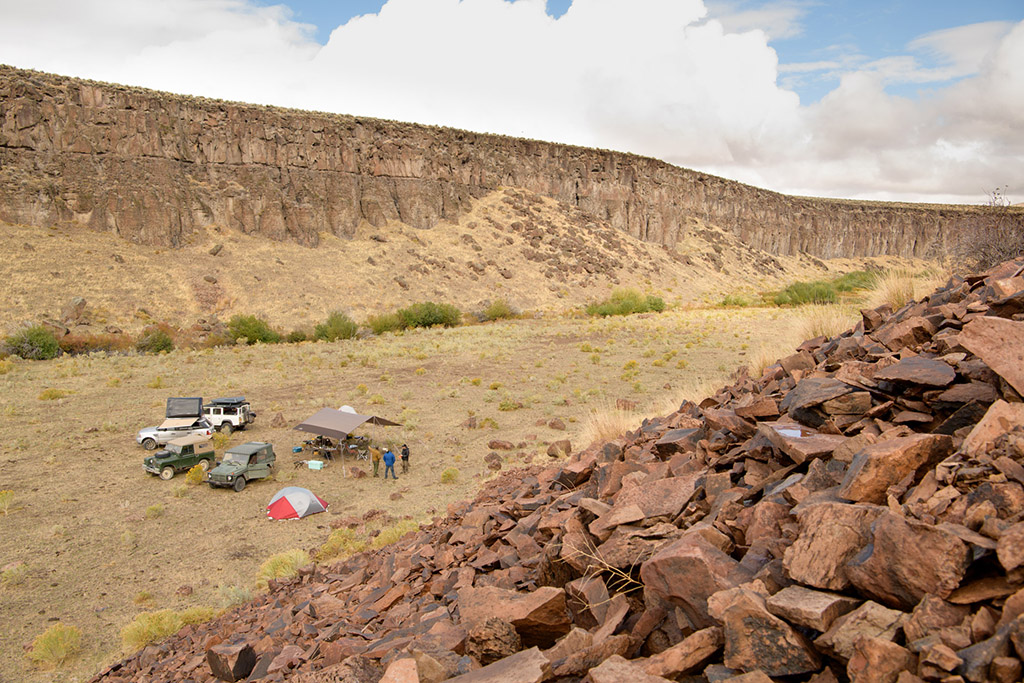 Some places, like this one in Eastern, Oregon, are deep in and best appreciated via dispersed camping.
Some places, like this one in Eastern, Oregon, are deep in and best appreciated via dispersed camping.Dispose of Waste Properly
Leave No Trace Principles apply to anything you bring with you. If you brought it, leave with it. Period. Be sure to take your dog waste with you too. Like human waste, it can become a health hazard to future visitors. Also, use biodegradable soaps and be sure to dispose of gray water well away from natural water sources. Be a dear and take any trash you find with you too.
Minimize Campfire Impacts
Let’s re-do this one and call it NO CAMPFIRES, at least during the summer months. Really, any time fire danger is above “low”, campfires are a risk. Please do not ever have a campfire when it’s windy. Late fall and early spring are the best times for them, and when you do have one in safe conditions, be sure it’s in an established fire pit, or bring your own fire pan or SOLO Stove® from home.
Only wood and paper get burnt; no glass, cans or plastic. These will either stay behind as a melted mess and/or release toxic fumes. And of course, thoroughly dousing your campfire with water, then stirring and dousing again, is critical in helping to minimize wildfire danger.
Be Considerate of Others
It is important to remember that we are not the only ones out there. The vast majority of people are there to enjoy nature. Bright lights, bumpin’ Bluetooth speakers, loud parties and gas generators are the most common offenses. I was recently camped outside Goblin Valley on BLM land where a distant RV’s generator boomed off the desert walls well into the night as they watched TV inside. By all means, have a good time, but do your best to be respectful and make sure that your good time doesn’t prevent others from having one too.
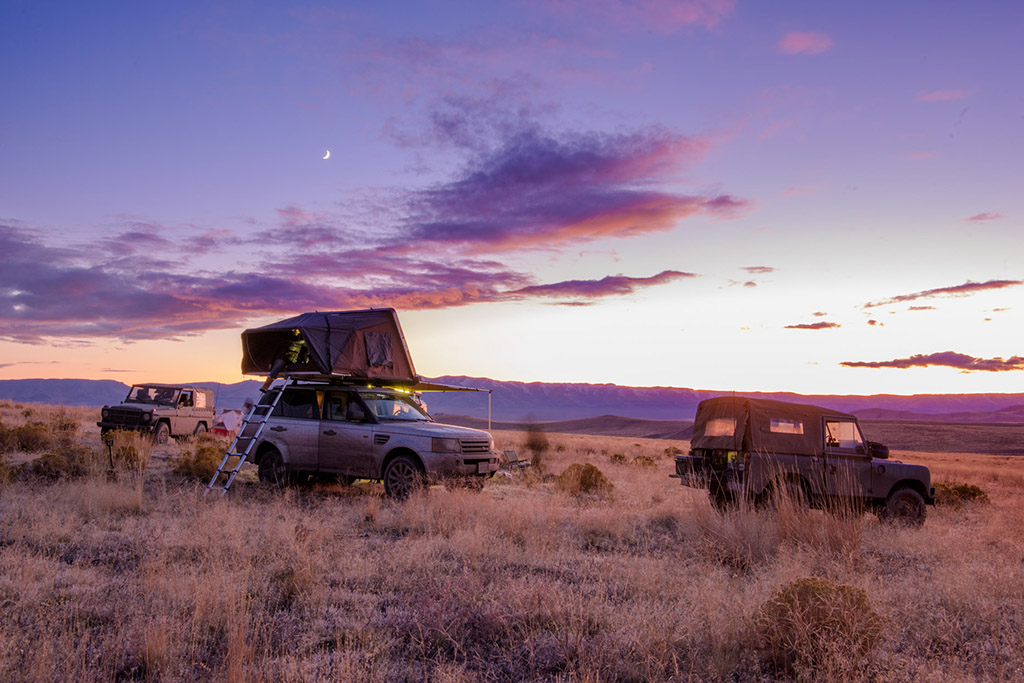 Sunset on some dispersed camping in southeastern Oregon.
Sunset on some dispersed camping in southeastern Oregon.Free and dispersed camping on public land really is a hallmark of America. It brings the ability to reconnect with nature and get away from it all to just about anyone that seeks it. We really are incredibly fortunate to have such a thing, so get out there and enjoy it. Treat it right and respect each other while you’re out there so we can all cont on it being there the next time we need a little more nature and a little less of everything else in our lives.
Related Posts:
- Camping on BLM Land – A Quick Guide to Get Started
- National Parks: Going Off-The-Beaten Path
- What To Do On National Trails Day
Updated. Originally Published August 17, 2021.
